The Art Detective
Textile Artists Are Back in the Public Spotlight in Museums and Galleries. Art Collectors? They’re Still Catching Up
Periodically overlooked and undervalued, textiles are being embraced by the art world (again), and the art market.
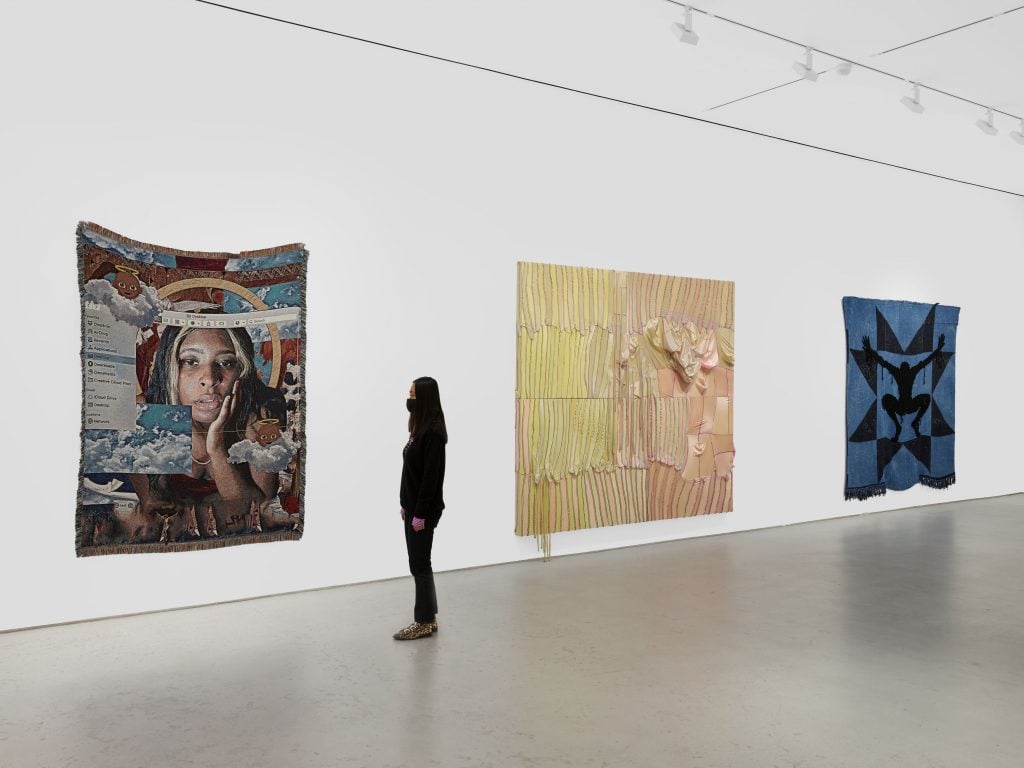
Periodically overlooked and undervalued, textiles are being embraced by the art world (again), and the art market.

Katya Kazakina

The Art Detective is a weekly column by Katya Kazakina for Artnet News Pro that lifts the curtain on what’s really going on in the art market.
In 2002, crowds lined up around the block outside the Whitney Museum of American Art to see “some of the most miraculous works of modern art America has produced,” according to a New York Times review.
They weren’t paintings or sculptures by contemporary artists. They were quilts stitched by hand by women in Gee’s Bend, a remote Alabama hamlet, where descendants of slaves had been creating works “so eye-poppingly gorgeous that it’s hard to know how to begin to account for them,” the critic Michael Kimmelman wrote.
The vibrant patched and stitched compositions of the Gee’s Bend quilt-makers, originally made with the most humble materials and for utilitarian purpose (like window insulation), have had a profound impact on a younger generation of artists. Those artists are now paying homage to the Whitney’s historic show, originally organized by the Museum of Fine Arts, Houston, in the middle of Chelsea.
At Hauser & Wirth, Legacy Russell, the executive director and chief curator of the arts nonprofit the Kitchen, organized “The New Bend” as a nod to the Whitney’s “The Quilts of Gee’s Bend.” The show, which brings together 12 contemporary artists working in textiles and fiber, including Diedrick Brackens, Qualeasha Wood, and Basil Kincaid, is a “love letter” to the women of Gee’s Bend for “building an incredible canon of creative practice that reaches right forward to the present day,” Russell said at a preview this week.
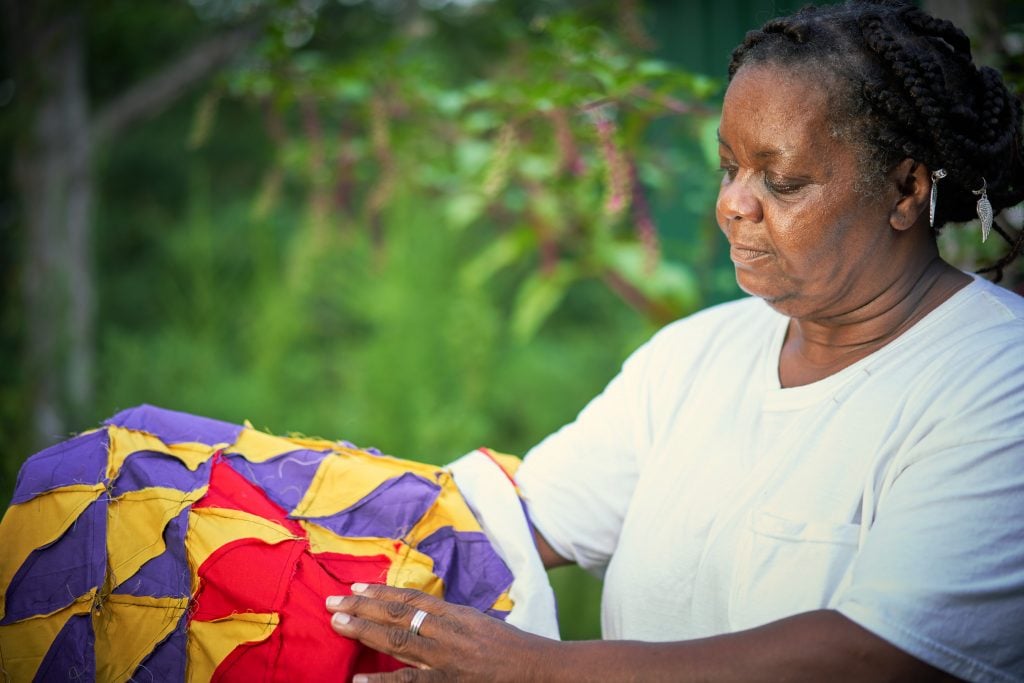
Gee’s Bend quilter Mary Margaret Pettway. Courtesy of Nest.
Periodically overlooked and undervalued, textiles are being embraced by the art world (again) and the art market. And although auction prices remain relatively low compared with paintings, quilt-making has a long and rich history, stretching from ancient Egypt to 15th-century Indonesian batik and Renaissance tapestries to works by the Bauhaus master Anni Albers. More recently, Faith Ringgold’s narrative quilts and the sprawling bottle-cap installations of El Anatsui have found new audiences.
“Artists have always worked in textiles,” said Adam Levine, director of the Toledo Museum of Art, which staged “Radical Tradition: American Quilts and Social Change” in 2021. The museum has also recently acquired eight quilts by Gee’s Bend artists.
“What may appear to be an explosion of textile producers, from a historical point of view, is an explosion of interest and awareness in a tradition that has always been important and is deep and rich.”
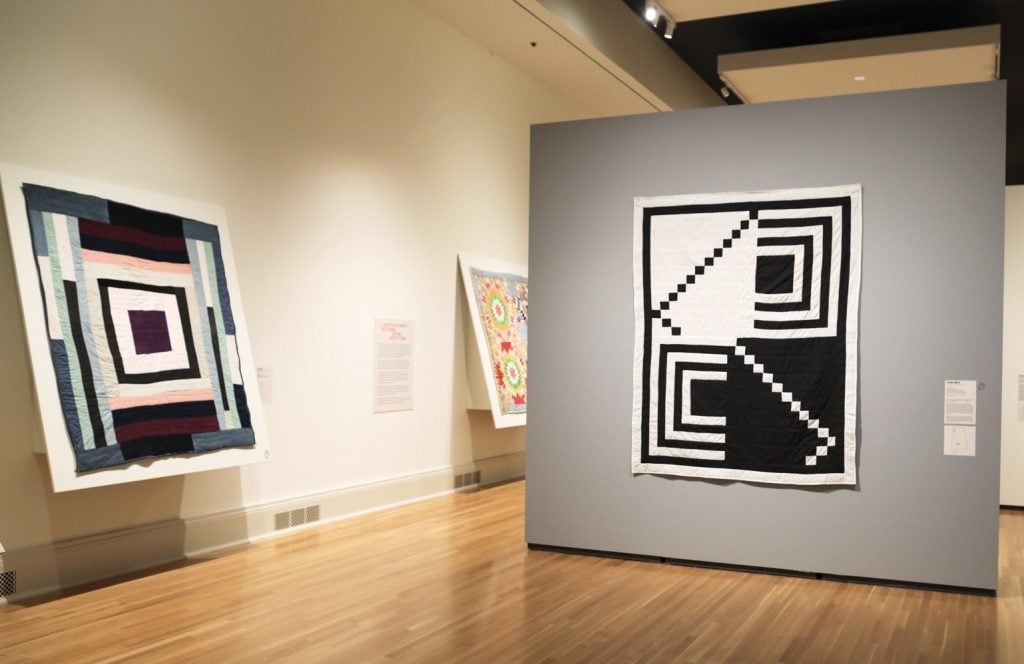
Living Legacies: Art of the African American South, installation view. Courtesy: Toledo Museum of Art
Indeed, four blocks north of Hauser & Wirth, Paula Cooper is showing “Stitched,” a group show expanding the definition of stitching from the literal to conceptual, with textiles, woven glass, and knotted-plastic works by artists such as Tauba Auerbach, Alighiero e Boetti, and Rosemarie Trockel. And just downtown, the Zimbabwe-based artist Moffat Takadiwa’s discarded objects form mosaic-like tapestries in “Brutalized Language,” a solo show at Nicodim Gallery.
“Artists working now in this medium are radically renegotiating what value was assigned to weaving historically,” said Hendrik Folkerts, curator of international contemporary art at Moderna Museet in Stockholm, and the organizer of a forthcoming survey of abstract tapestries and textile installations by the South African artist Igshaan Adams, whose work recently sold at Phillips New York for $88,200, at the Art Institute of Chicago.
Last year, the Chicago museum organized an acclaimed solo show by African American artist Bisa Butler, whose vibrant quilted portraits depict family members, neighbors, and historical figures.
The renewed focus on textiles feels particularly urgent at a time of broader cultural reckoning over race and inequality: it’s no coincidence that textiles are being actively and intentionally used by artists of color, who have also been excluded from the canon of art history, Folkerts said.
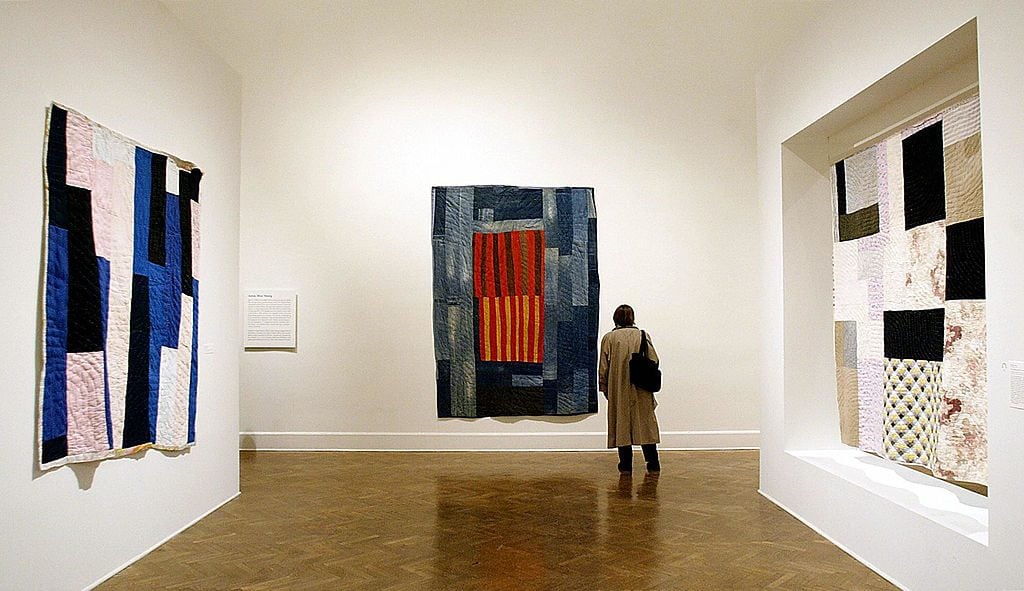
A visitor looks at “The Quilts of Gee’s Bend,” a show at the Corcoran Gallery of Art in Washington, DC, in February 2004. (Photo: STEPHEN JAFFE/AFP via Getty Images)
The medium most recently burst into the public consciousness in 2018, when the Metropolitan Museum of Art staged a show of Gee’s Bend quilts it received as a gift from the Souls Grown Deep Foundation.
The show, which earned glowing reviews, became a watershed moment for critics, curators and dealers, said Maxwell Anderson, the foundation’s president.
“It took an institution of the Met’s caliber,” he said.
Yet the tradition hasn’t always been viewed as high art. Anderson, the director of the Whitney in 2002 when it hosted the traveling Gee’s Bend quilt show, faced resistance from the mainstream art world at the time.
“Why are you doing this show of quilt-makers from Alabama? How many mid-career artists haven’t had a show at the Whitney yet?” Anderson said this week, recalling a comment from a Whitney museum trustee.
“I took a fair bit of flack,” Anderson said. “Then Michael Kimmelman’s review came out and it helped turn the tide.”
In the past few years, Anderson has met many artists, including Butler, Brackens, and Sanford Biggers, who’ve been deeply impacted by Gee’s Bend quilts. Since he became president of Souls Grown Deep in 2016, the organization has placed Gee’s Bend quilts in more than 30 U.S. museums. Some, like the Met, received works as gifts; others paid a reduced price, Anderson said.
Contemporary works are also gaining traction. There’s a long list of collectors clamoring for Butler’s works, many of which are in museum collections. Yet only one of her works has appeared at auction so far, fetching $75,000 last year, against the low estimate of $7,000, at Swann auction house—all of which suggests collectors have some catching up to do.
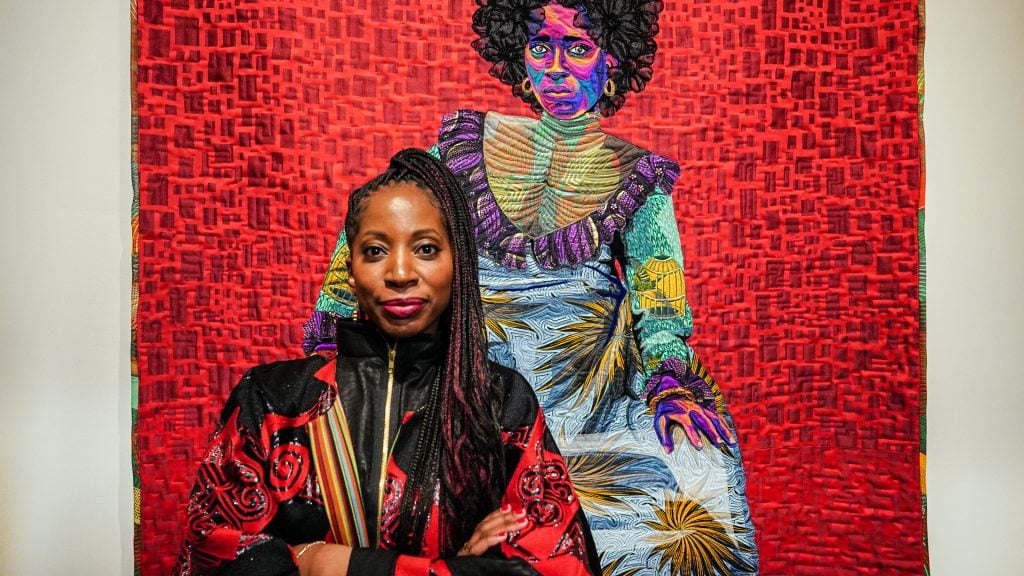
Bisa Butler in the studio. Photography by John Butler.
Europe is the next frontier, said London art dealer Alison Jacques, who represents Gee’s Bend artists. Last year, she organized the first show in a European commercial gallery of their works.
“It’s hard to believe,” she said. “In Europe, it’s a little bit of a blank page.”
The works resonated with her because of their beauty, and how the skills they exhibited were passed from grandmother to mother to daughter. Despite the hardships of segregation, racism, and bigotry, the Gee’s Bend women created “something very positive, joyful and hopeful.” They also fit with her gallery program that represents artist Sheila Hicks, known for fiber installations, and the estate of pioneering textile artist Lenore Tawney, who died in 2007.
With prices ranging from $25,000 to $50,000, Jacques has placed artworks with museums and important private collections. Among the works she’s shown and sold are those by Candis Mosely Pettway (1924-1997), her daughter Qunnie Pettway (1943-2010), and granddaughter Loretta Pettway Bennett.
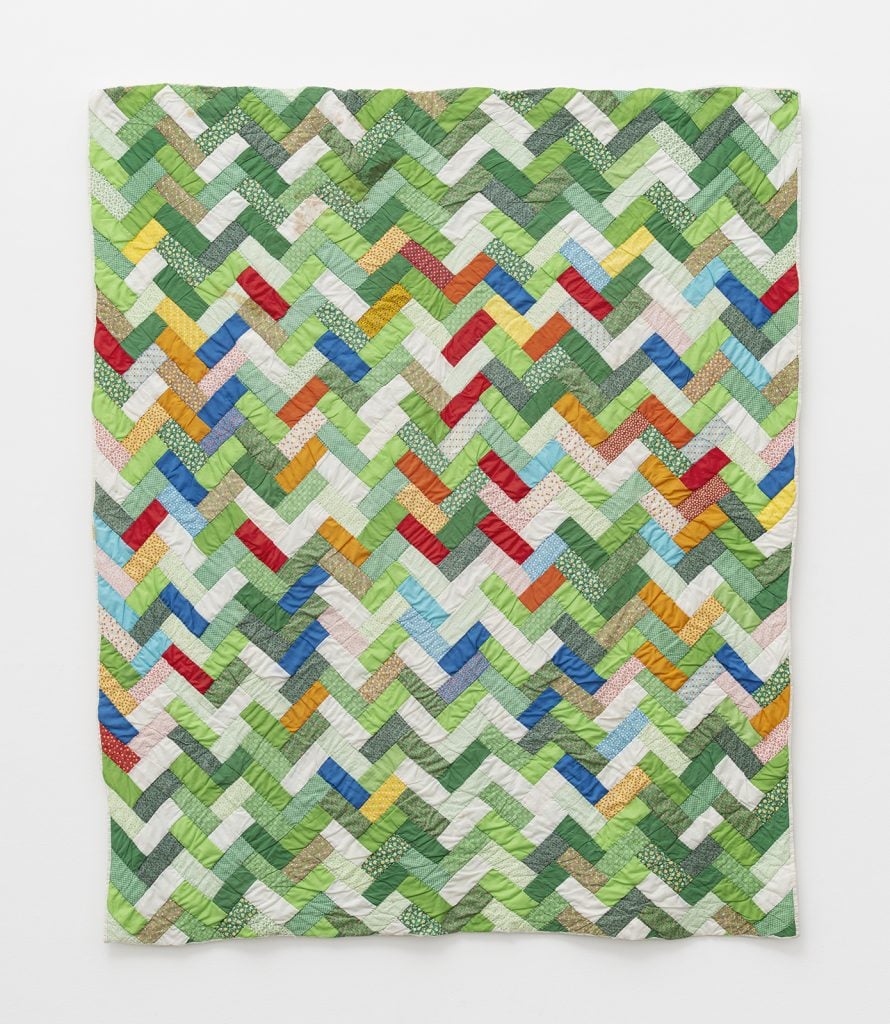
Candis Mosely Pettway, Coat of Many Colors (quilting bee name), 1970
Courtesy Souls Grown Deep Foundation and Alison Jacques, London © Candis Pettway
Her goal is to create a new context for the works.
“Paintings, they are not, but I equate them to that,” Jacques said. “It can’t be reduced to just, ‘Oh, it’s fabric.’ It’s a very simplistic view which doesn’t do [artists] any service. They need to be looked at for what their art is saying, rather than purely for the medium it’s made out of.”